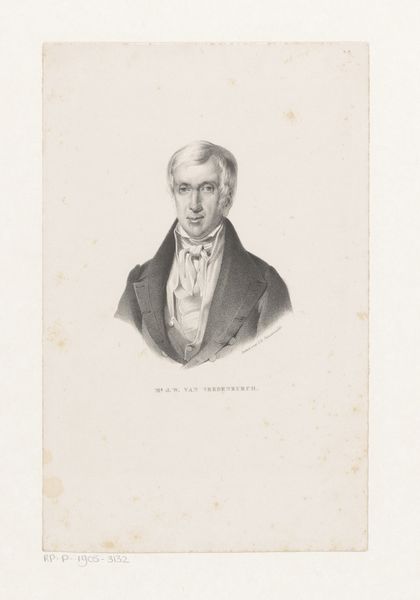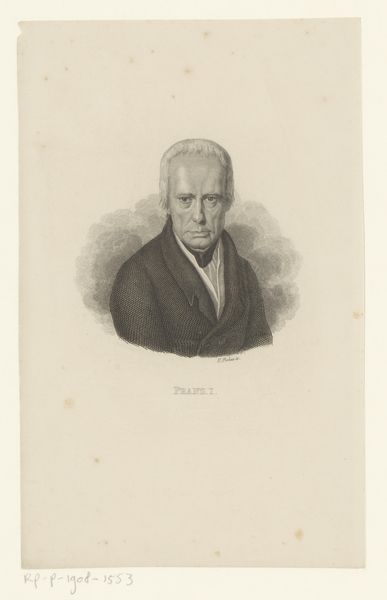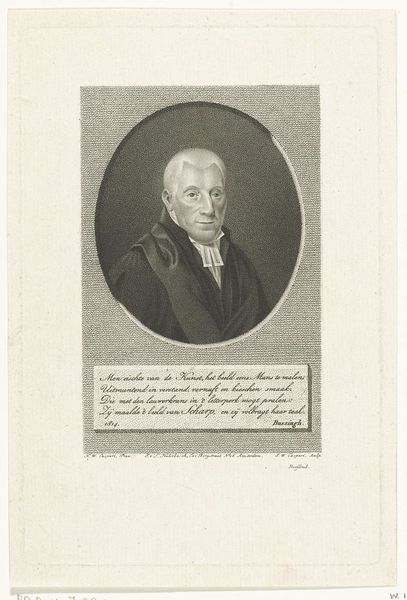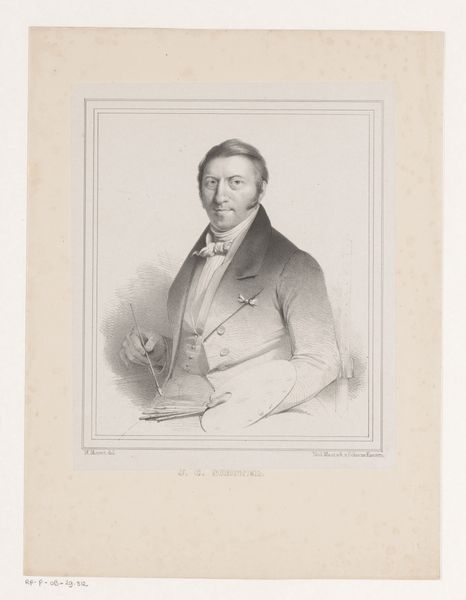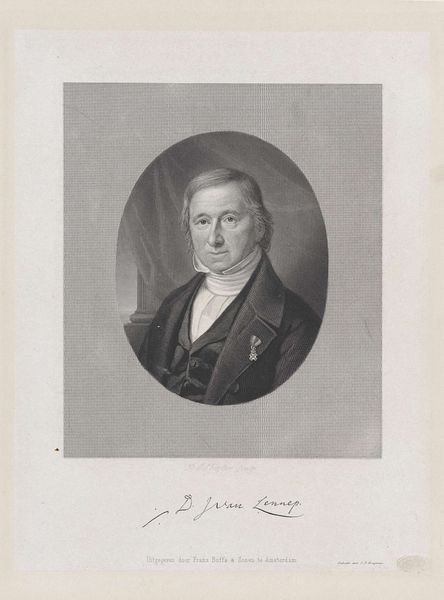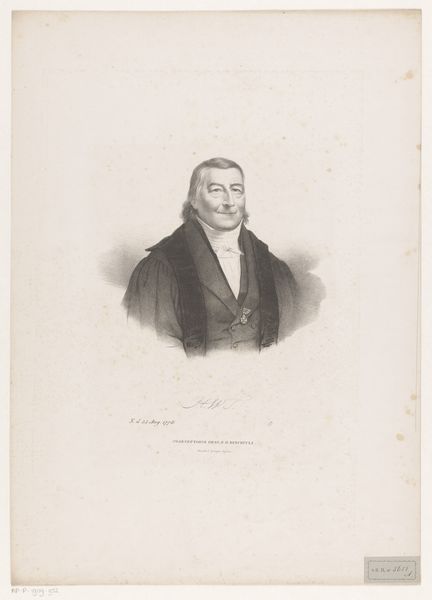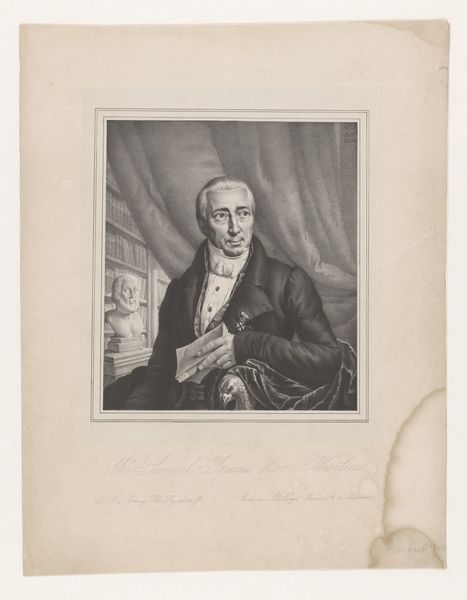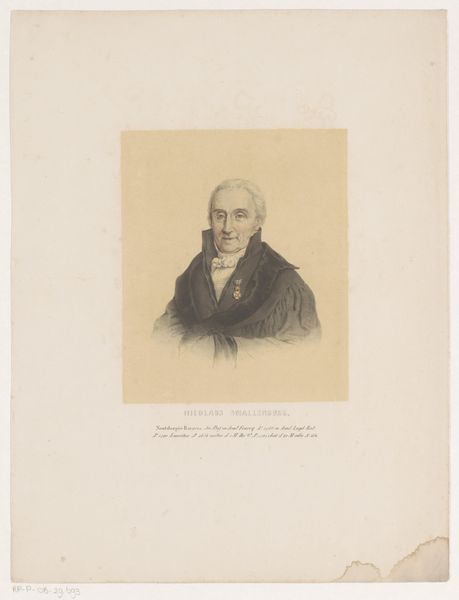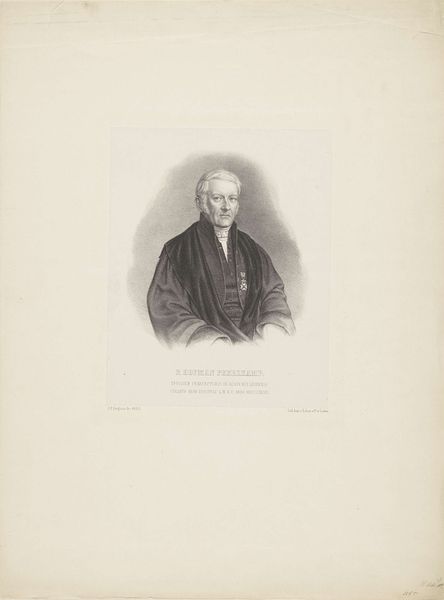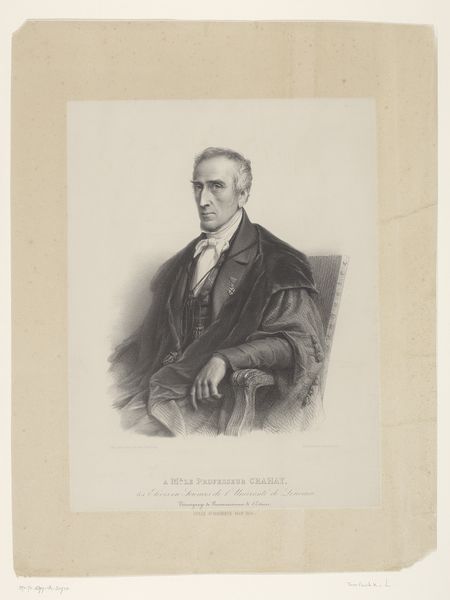
drawing, pencil
#
portrait
#
drawing
#
16_19th-century
#
pencil drawing
#
pencil
#
portrait drawing
#
academic-art
#
realism
Dimensions: height 520 mm, width 362 mm
Copyright: Rijks Museum: Open Domain
Franciscus Bernardus Waanders created this portrait of Michiel Jacobus Macquelijn using lithography, a printmaking technique, in the 19th century. During this period, the Netherlands was undergoing significant social and political change, as it transitioned from monarchy to constitutional state. In this climate, portraits served not only as representations of the individual but also as affirmations of social standing. The portrait embodies a traditional representation of power, reflecting the identity of the sitter as a member of the elite. It speaks to the historical emphasis on portraying men in positions of authority. Consider the emotional nuances conveyed through the subject’s gaze, as well as the societal norms shaping both the artist's portrayal and the sitter’s self-presentation. What does it mean to present yourself in this way? How does it speak to the power dynamics of that time? This piece reflects the intersection of personal identity and broader socio-political structures, reminding us that portraiture is never just a likeness.
Comments
No comments
Be the first to comment and join the conversation on the ultimate creative platform.
